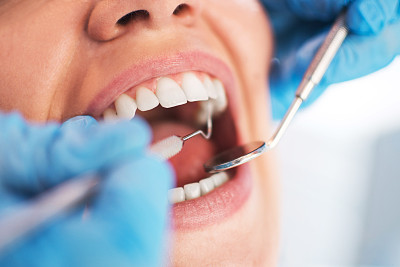Comprehensive Guide to Dental Implant Treatment Benefits Procedures and Recovery for Improved Oral Health and Aesthetic Appeal
Summary: Dental implant treatment has revolutionized the way we address tooth loss, offering enhanced oral health and improved aesthetic appeal. This comprehensive guide explores the benefits of dental implants, the procedures involved, and the recovery phase, emphasizing their significance in restoring function and aesthetics. From improving oral hygiene to boosting self-esteem, dental implants provide a permanent solution for missing teeth. The article will provide insightful details on each aspect of the dental implant journey, ensuring individuals have a well-rounded understanding before undergoing treatment.
1. Benefits of Dental Implants for Oral Health

Dental implants offer numerous advantages that contribute significantly to oral health. One major benefit is their ability to preserve jawbone density. When a tooth is lost, the underlying bone may begin to deteriorate due to lack of stimulation. Implants fuse with the bone through a process called osseointegration, effectively preventing bone loss and maintaining the structure of the face.
Furthermore, dental implants improve oral hygiene. Unlike dentures, which can trap food and bacteria, implants function like natural teeth, making it easier to maintain proper oral care routines. Regular brushing and flossing can now be applied without restriction, leading to improved overall oral health.
Finally, dental implants help in restoring function, which enhances the quality of life for individuals. They allow patients to chew food comfortably without worrying about slippage or discomfort, contributing to better nutrition and overall wellness.
2. Step-by-Step Dental Implant Procedure
The dental implant procedure typically consists of several key stages. The initial step involves a comprehensive examination and imaging to determine the health of the jawbone and adjacent teeth. This assessment ensures that the patient is a suitable candidate for the procedure, addressing any preliminary oral health issues.
Once the examination is complete, the next phase is the surgical placement of the implants. Under anesthesia, a titanium post is inserted into the jawbone, acting as a root for the new tooth. Post-surgery, a healing period of a few months is required for osseointegration to occur, ensuring that the implant is securely anchored.
The final step involves attaching a crown to the implant. After the healing period, a custom-made crown is placed, designed to match the surrounding teeth. The result is a natural-looking and fully functional replacement tooth.
3. Recovery Process After Implant Surgery
Recovering from dental implant surgery is a critical phase that impacts the overall success of the treatment. Initially, patients may experience some discomfort and swelling, which can be managed with prescribed medications. Adhering to post-operative care guidelines is essential for a smooth recovery.
During the first few days, patients are advised to follow a soft food diet to avoid placing stress on the implant site. Staying hydrated and maintaining oral hygiene, with caution around the surgical area, is equally important. Regular follow-ups with the dentist will ensure the recovery process is on track.
Most patients find that after a few weeks, their discomfort significantly decreases, and they can gradually return to normal eating and dental hygiene practices. Full recovery may take several months, but the end result—functional and aesthetically pleasing teeth—is well worth the wait.
4. Enhancing Aesthetic Appeal with Implants
A significant advantage of dental implants is their ability to enhance aesthetic appeal. Unlike traditional dentures that may look unnatural, modern implants are designed to blend seamlessly with existing teeth. The custom crowns created for the implants are matched in color and shape to ensure a natural appearance.
Additionally, dental implants can restore facial contours that may have been lost due to missing teeth. By filling gaps and supporting facial structure, implants help maintain a youthful appearance, positively affecting a person’s self-confidence and social interactions.
Moreover, the permanence of dental implants—compared to removable options—ensures that individuals wont experience limitations in physical activities or embarrassment due to slippage or noise, further enhancing their lifestyle and aesthetic experience.
Summary:
Dental implant treatment stands as an effective solution for tooth loss, offering significant benefits that extend beyond aesthetics. With a systematic procedure and manageable recovery period, implants ensure the restoration of both function and beauty, ultimately improving a persons quality of life. Individuals considering this option should feel assured in its effectiveness and transformative potential.
This article is compiled by Vickong Dental and the content is for reference only.



